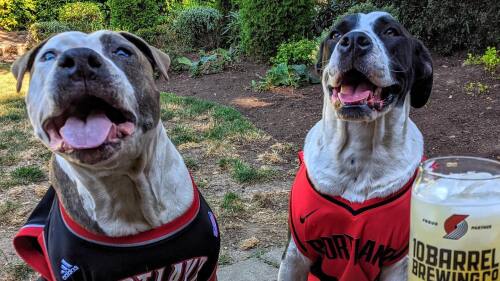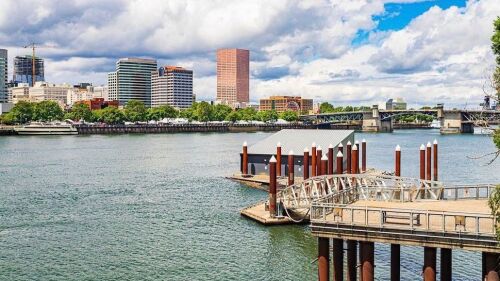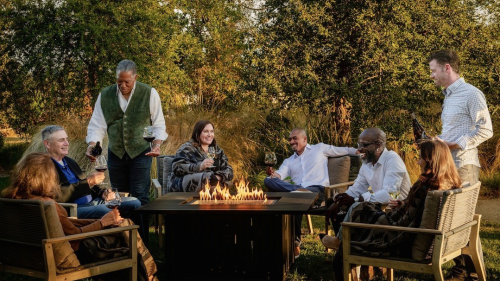This piece is part of our PDXtoday Q+A series. Do you know someone we should interview? Nominate them here.
If you’ve lived in the Portland area for any length of time, chances are you’ve visited the world-famous Oregon Zoo. More than 1.5 million people flock to the zoo in Washington Park every year to glimpse the 2,500+ animals that live there, including some that are endangered in the wild.
We wanted an inside perspective on what it’s like to work at the zoo, so we interviewed one of its many keepers — Ali Azevedo — who works in the North America area.
Q: Did you always want to be a zookeeper?
A: I have always wanted to work with animals in some capacity. From dog rescue to research to wildlife photography to veterinary medicine, I have been engaged with animals since I was 12 years old. I started working in wildlife rehabilitation and zoo-keeping three years ago. Once I got a taste of conservation work and zoo animal care, I knew it was the right place for me.
Q: What animal(s) do you care for at the zoo + what should people know about them?
A: Our North America area is home to a diverse group of species, all found in Oregon. This list includes mountain goats, black bears, bald eagles, cougars, river otters, snakes, lizards, toads, frogs, turtles, ducks, fish — and of course, beavers! What is special about this part of the zoo is that most of these species can be seen in our own backyards. Although raising awareness about animals from around the globe is an incredible part of zoo work, giving people an opportunity to connect with the wildlife they live among can be astoundingly impactful. It is always important to give wild animals their space, but if you take some time to look up in a tree, along a riverbank or inside a fallen log, you might be lucky enough to see a species that we house in its natural environment.
Q: Can you walk us through an average workday?
A: What I love most about this job is, there is no “average” workday. Every day is a little different, and the animals certainly know how to keep us on our toes! In general, we get our cleaning done in the morning, making sure yards and holding areas are fresh and comfortable for the animals. Throughout the day, we feed, train, administer medications or treatments as directed by our veterinary staff, prepare diets, perform area maintenance, keep records, create and distribute enrichment, and a lot more. Not as much of our day is spent with the animals as the public might think, but the time we do share with them drives me to do my best each and every day.
Q: What’s your favorite part of your job?
A: My favorite part of my job is getting to work with an amazingly diverse group of animals — including the human ones! I consider it an immense privilege to be able to learn and grow alongside such dedicated, kind, and empathetic people, as well as intelligent and charismatic animals. I learn something new every day. What is better than that?
Q: How is the Oregon Zoo working to bring awareness to a species you work with?
A: I could probably write a book on all the zoo conservation and outreach programs! Our communications team is great about getting our messages and project goals and successes out through social media. Our recent collaboration with a variety of agencies working on beaver-human conflict mitigation has a great video I’ve seen shared by friends, news outlets, other facilities, and keepers across the country. I think it always comes back to creative education. As a keeper, it can be easy to take all the knowledge and exposure to conservation issues we receive for granted. As someone who has worked a lot in human-wildlife conflict mitigation and wildlife rehabilitation, I try to take as much time as I can to talk about topics such as how to coexist with cougars, or why you should clean your bird feeders … I find the little moments matter, especially in a time where larger outreach has its limitations.
Q: When you’re not at the zoo, what do you like to do?
A: When not at the zoo, I love to spend my time reading, puzzling and rock climbing.
Q: What animal inspires you the most?
A: The animal that inspires me the most is the American badger. After having the pleasure of working with an amazing badger, I have come to rely on the lessons they teach us — like, just because you’re small doesn’t mean you can’t be tough! I’ve also grown to have tremendous respect for the intelligence of birds of prey, and the resilience of reptiles.
Q: Is there anything you’re looking forward to in 2022 at the zoo?
A: In 2022, I am so excited to be a part of our head-start program for northern leopard frogs. Soon, we will receive egg masses that we will raise in protected enclosures until they have fully developed into frogs and are ready for life in the wild.












